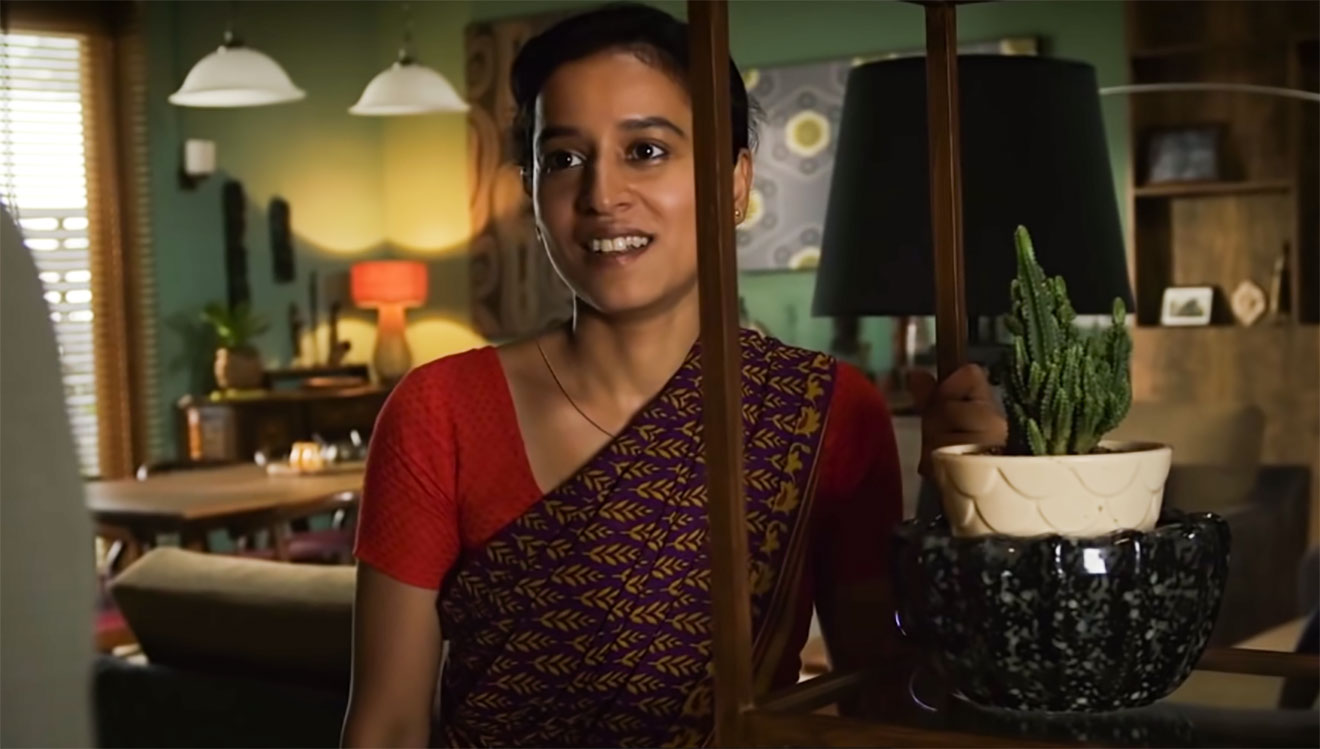Spoilers Ahead.
The Girl on the Train, the Hindi adaptation of Paula Hawkins’ 2015 best-selling novel, which released this Friday on Netflix is a scarcely believable and poorly executed soap opera that is a far cry from the Gone Girl-esqe thriller the source material is.
The film stars Parineeti Chopra, Kriti Kulhari, Aditi Rao Hydari, and Avinash Tiwary in crucial roles. Ranging from overly dramatic to tedious and laughable, the performanances, much like the film, lack subtlety. In the book, the protagonist’s unreliable narration is the story’s driving force. She is unlikeable. Parineeti Chopra’s Mira is unlikeable in the film too, but for the wrong reasons: her sob stories invoke eye-rolling instead of sympathy.

The movie makes several changes from both the original book and the 2016 film by Tate Taylor, to appeal to the Indian audience. In an interview with Indian Express, director Ribhu Dasugpta said, “Since it was a Hindi film, we had to rewrite some portions, give some elements to the characters and write them very differently. At the end of the day, you’re an Indian consumer, so they were our first priority.”
The Context
The Girl on the Train retains the skeletal plot of Hawkins’ novel. Mira (Chopra) is an alcoholic, unemployed woman in London who travels by the same train every day staring at the suburban houses that her train passes by. Having lived in one of those houses with her ex-husband Shekhar (Tiwary), she repeatedly recollects the fond memories that she shared with him. Her unstable nature coupled with her amnesia caused by trauma and alcohol causes her to cling to her ‘glorious’ past and take the train every day to relive it.
Unable to move on from her former life, she begins to pin all her fantasies and desires on Nusrat (Aditi Rao Hydari) and her husband Anand who are Shekhar’s neighbours. Imagining that Nusrat has the perfect married life, Mira is obsessed with the couple’s marriage.
However, things go awry when she notices Nusrat hugging a strange man one day. Soon, Mira gets pulled into a missing person investigation when Nusrat goes missing and is eventually found dead.
The Deviations
While both the Hindi adaptation and 2016 version have major differences from the novel, here the deviations feel unnecessary. Unlike in the book and Tate Taylor’s version, the protagonist’s cause for alcoholism is very different.
A successful lawyer, Mira loses her baby in a car accident causing her to become dependant on alcohol as a method to cope with her loss. This puts a strain on her marriage and it ultimately results in Shekhar cheating on her and filing for divorce. In the novel, however, it is infertility that causes Rachel (the protagonist’s name in the book) to take to alcohol.

Dasgupta also adds new characters to the film, introducing Walter, a private investigator who has been hired to follow Nusrat, and Rajiv, a dance instructor who constantly harasses her. Missing from the source material, these characters add very little to the the plot, except to prolong an already tiresome film. Mira also sees a doctor for her amnesia, a subplot that does not feature in the 2016 film or the book.
Dasgupta spends time in the first half establishing how happy Mira was before tragedy struck. There are forgettable wedding songs, corny proposals, and a chase sequence to showcase her former life to remind viewers that even in 2021, Hindi films will still depend on overused tropes to make a point.
The psychological horror elements that made The Girl on the Train stand out have been dulled down and overexplained . Viewers have to hear Mira’s internal monologues that explain her pain rather than seeing it on screen. Rather than focusing on Shekhar’s gaslighting and Mira’s obsessive behaviour, the director spends his time on forgettable ballads to show her heartbreak.
Like in the novel, the movie introduces two detectives who work with the Scotland Yard (Kriti Kulhari and Vishakh Vadgama ). However, as the film progresses the spotlight shifts to only Dalbir’s (Kulhari) focus on the case.
Even the smaller mysteries such as Anand’s (Nusrat’s husband) suspicious nature and his complicated relationship with Mira have been glossed over. The aspect of Shekhar’s relationship with his new wife is left unexplored. In Hawkins’ version, his new wife becomes increasingly suspicious of his behaviour and discovers his affair towards the end. She even aids Rachel in putting an end to his abusive streak.
In another deviation from the book, Mira’s drunken calls to Shekhar are mentioned only once and Mira does not harass the couple as seen in the book. In the end, she just knocks Shekhar unconscious whereas the book and the 2016 adaptation show her killing him with a corkscrew in self-defense.
Recommended
In the novel Meghan’s (Nusrat in this version) past trauma where she inadvertently drowns her baby plays a major role in her characterisation. Here, that is skipped altogether and she is simply reduced to a device to propel the plot further which is a far cry from the novel. Her trauma and her fear towards her husband are also never established.
The Ending
The Hindi version ends bizarrely. After Mira finds out about the affair between Shekhar and Nusrat, she tells him to meet her and confronts him there, but what happens after is unconvincing. The contrived reveal at the end only succeeds in making the film a melodramatic and unconvincing tale rather than a fast-paced thriller. Dasgupta’s added subplots and deviations from the original make the film a poor retelling of the original.
Riddled with plot loopholes, poorly defined characters and boring plot twists, the movie neither incorporates the gripping elements from the book, nor stands its ground as an independent thriller.



